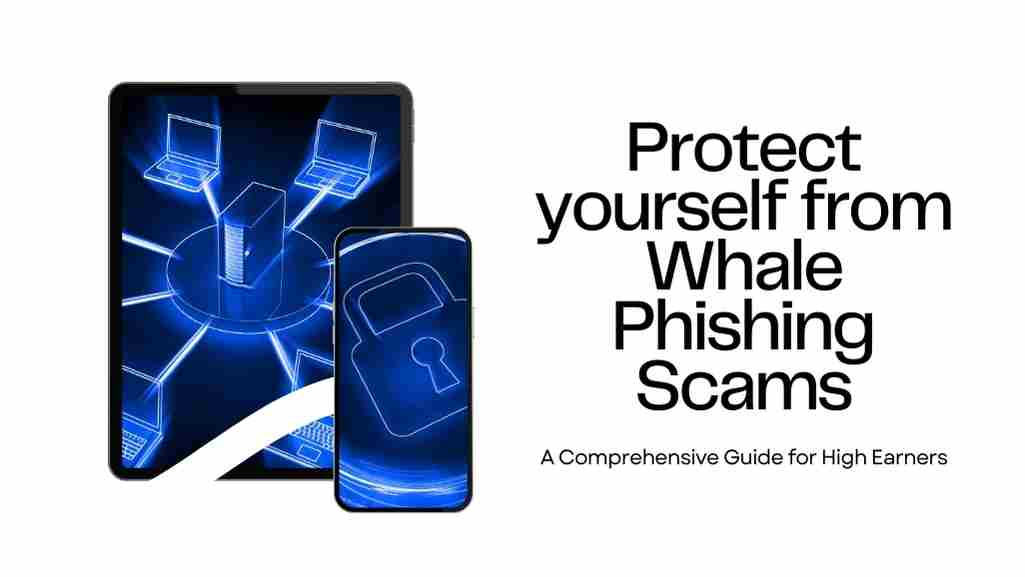Protect Yourself from Whale Phishing Scams: A Comprehensive Guide for High Earners- In recent years, the rise of sophisticated cybercrime has posed significant threats to individuals, particularly high-income earners. One such perilous scam gaining traction is whale phishing, targeting senior executives and affluent individuals. In this guide, we delve deep into the intricate workings of whale phishing scams, equipping you with essential knowledge to safeguard your finances and personal information.
Protect Yourself from Whale Phishing Scams: A Comprehensive Guide for High Earners

Understanding Whale Phishing: The New Frontier of Cybercrime
Whale phishing, also known as CEO fraud or business email compromise (BEC), is a deceptive tactic employed by cybercriminals to manipulate high-ranking individuals into transferring large sums of money or divulging sensitive information. Unlike traditional phishing schemes, whale phishing specifically targets executives, exploiting their authority and access to company funds.
Anatomy of a Whale Phishing Scam
- Initial Reconnaissance: Scammers conduct thorough research to gather information about their target, including job roles, company hierarchy, and communication patterns.
- Crafting Deceptive Emails: Utilizing sophisticated social engineering techniques, fraudsters create convincing emails impersonating trusted colleagues, clients, or superiors. These emails often contain urgent requests for financial transactions or sensitive data.
- Establishing Credibility: By leveraging insider knowledge acquired through reconnaissance, scammers adeptly mimic the language and tone of legitimate correspondences, enhancing their credibility and minimizing suspicion.
- Exploiting Trust: The ultimate goal of whale phishing is to exploit the implicit trust between executives and their associates, compelling victims to comply with fraudulent requests without hesitation.
Real-Life Consequences: Senior Executive Loses Rs. 4 Crore in Whale Phishing Scam
The recent incident involving a senior executive losing Rs. 4 crore serves as a stark reminder of the devastating repercussions of falling victim to whale phishing scams. Despite stringent security measures, even the most seasoned professionals can succumb to the cunning tactics employed by cybercriminals.
Mitigating the Risks: Strategies for Protection
1. Heightened Vigilance and Awareness
- Stay Informed: Remain abreast of emerging cyber threats and familiarize yourself with common phishing tactics utilized by scammers.
- Verify Requests: Exercise caution when receiving unexpected or unusual requests, especially those pertaining to financial transactions or confidential information. Always verify the authenticity of such requests through alternate communication channels.
2. Implement Robust Security Measures
- Multi-Factor Authentication (MFA): Enforce MFA protocols across all digital platforms to add an additional layer of security against unauthorized access.
- Encryption and Secure Networks: Utilize encrypted communication channels and secure networks to safeguard sensitive data from interception by malicious actors.
3. Conduct Ongoing Training and Education
- Cybersecurity Awareness Programs: Institute regular training sessions to educate employees about the evolving threat landscape and reinforce best practices for identifying and mitigating phishing attempts.
Conclusion: Strengthening Your Defenses Against Whale Phishing
Whale phishing scams represent a formidable threat to high earners and senior executives, exploiting vulnerabilities in trust and communication channels. By adopting a proactive approach to cybersecurity and implementing robust defense mechanisms, individuals can fortify their defenses against malicious actors and mitigate the risk of falling victim to these insidious schemes. Stay vigilant, stay informed, and prioritize the protection of your financial assets and personal information in an increasingly digital landscape.
ALSO READ-“Love in Bloom: Valentine’s Day 2024 Celebrations Spark Romance Worldwide”